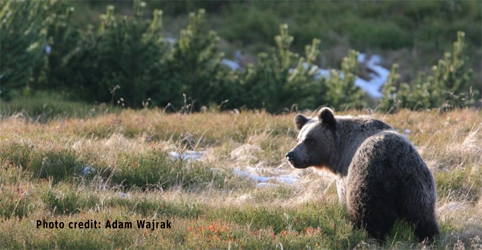In Europe every year about 12,000 sheep and goats and 2,000 beehives are claimed lost due to brown bear damage and compensated to farmers. Just a few countries account for the majority of these losses. This study highlights that these differences are related to management and land-use practices, and not to bear abundance. A wolf preying on sheep or a bear raiding an apiary often imply economic and emotional losses to farmers and often lead to negative attitudes towards the wildlife causing the damage. This has triggered that in the past humans did everything to exterminate these species, which then were extirpated in many countries and regions. Nowadays things have changed: wolves, bears and other predator species are protected by law and cannot be legally persecuted any longer. To support protection, many countries provide economic compensation to offset these losses through environmental agencies or other organizations. This study shows that the number of compensations for bear damage greatly differ among European regions. For instance, in Norway approximately 900 claims are compensated every year, while in Estonia only 30. These differences are larger if we take into account that in Estonia there are 4 times more bears than in Norway, or, in other words, that the number of compensations per bear is 150 times higher in Norway than in Estonia. Why those differences? The study reveals that we have to look into what humans do. How the claims are compensated, which management practices, like supplementary feeding of bears, are used or the amount of agricultural land in the area, all influence the final number of claims. However, the abundance of bears has no influence. A practice commonly used is to reduce the number of bears by establishing culling quotas. This study finds that things are not so simple and that the regions where bears are hunted or that have less number of bears are not necessarily the ones with less claims. The way of compensating damage differs across countries and this is reflected in the number of compensations. An example of good practice is Sweden. There, the government subsidizes preventive measures, such as dogs and electric fences, to protect livestock and apiaries. If damage is claimed by a farmer, then a damage inspector has to verify that it was caused by a bear and compensations are only paid if preventive measures were used. On the other extreme, in Norway up to 95% of compensation payments for livestock losses are not verified to be made by bears and correspond to free ranging and unprotected sheep. It is interesting that these differences between neighbouring countries are not rare across Europe. The same bears are blamed for numerous damages on one side of the border, and for just a few on the other. informacion[at]ebd.csic.es: Bautista et al (2016) Patterns and correlates of claims for brown bear damage on a continental scale. J Appl Ecol doi:10.1111/1365-2664.12708
http://onlinelibrary.wiley.com/doi/10.1111/1365-2664.12708/full








 ¡Abierta convocatoria para proyectos de investigación en la ICTS- Doñana!
¡Abierta convocatoria para proyectos de investigación en la ICTS- Doñana!


